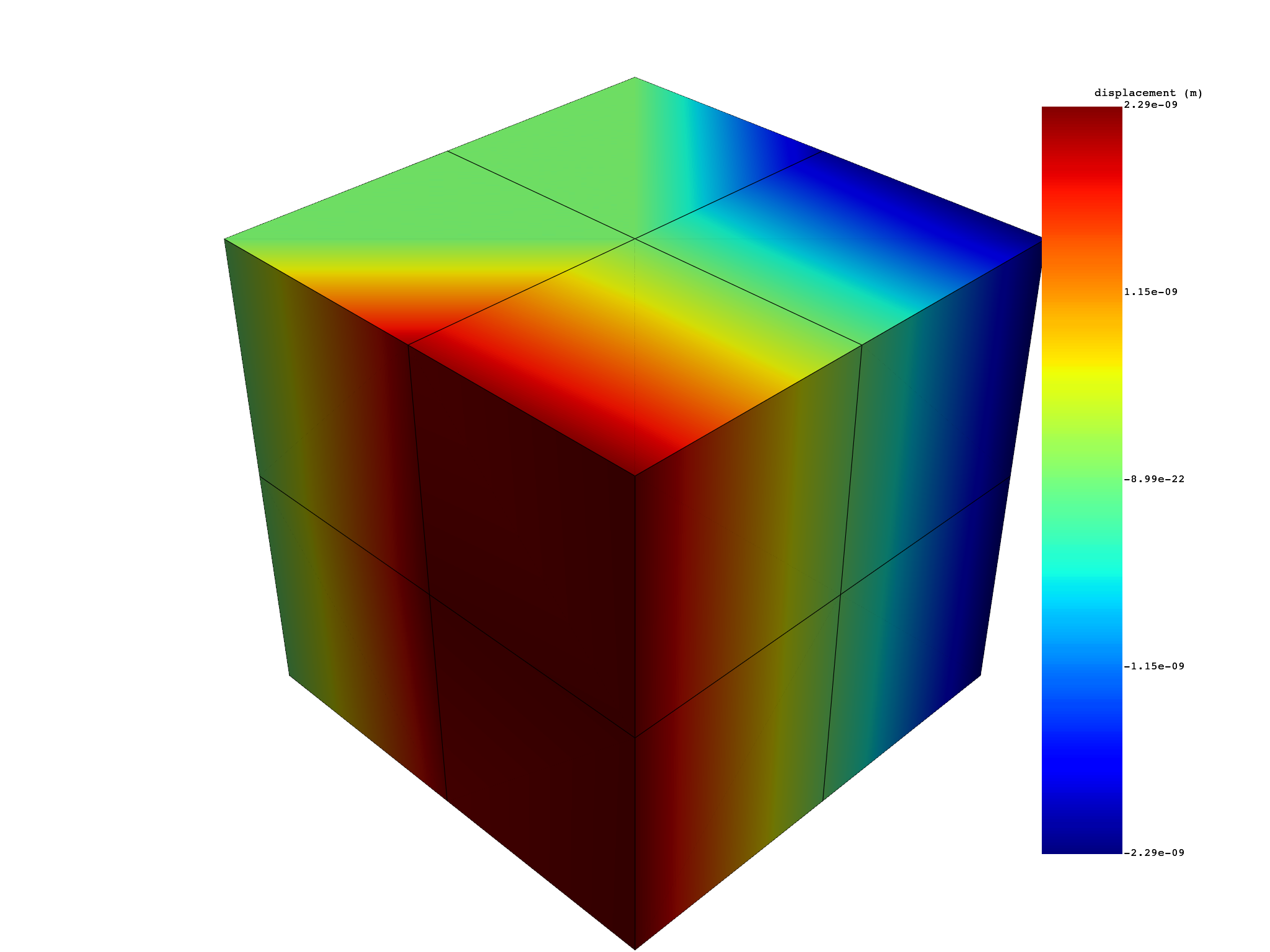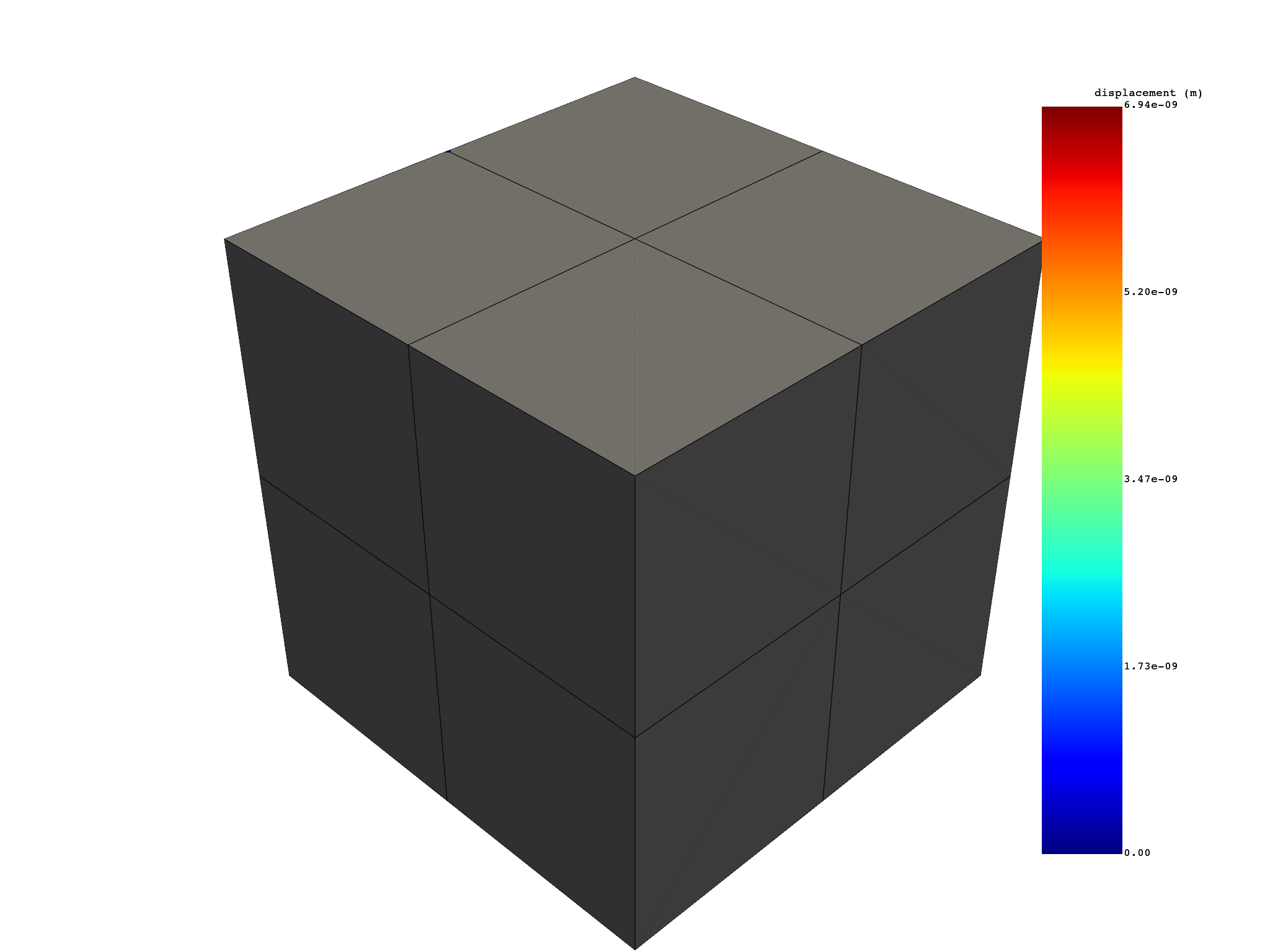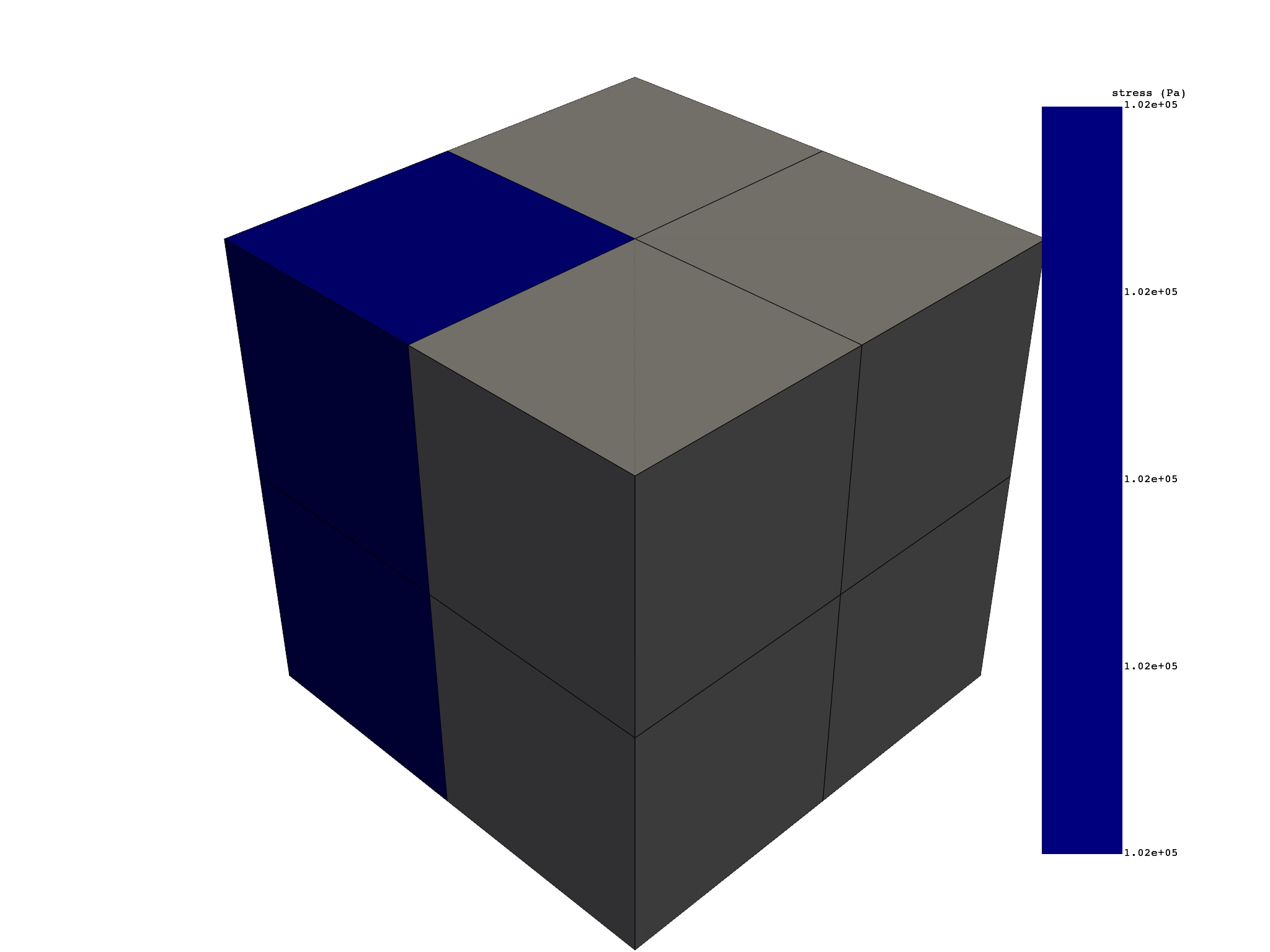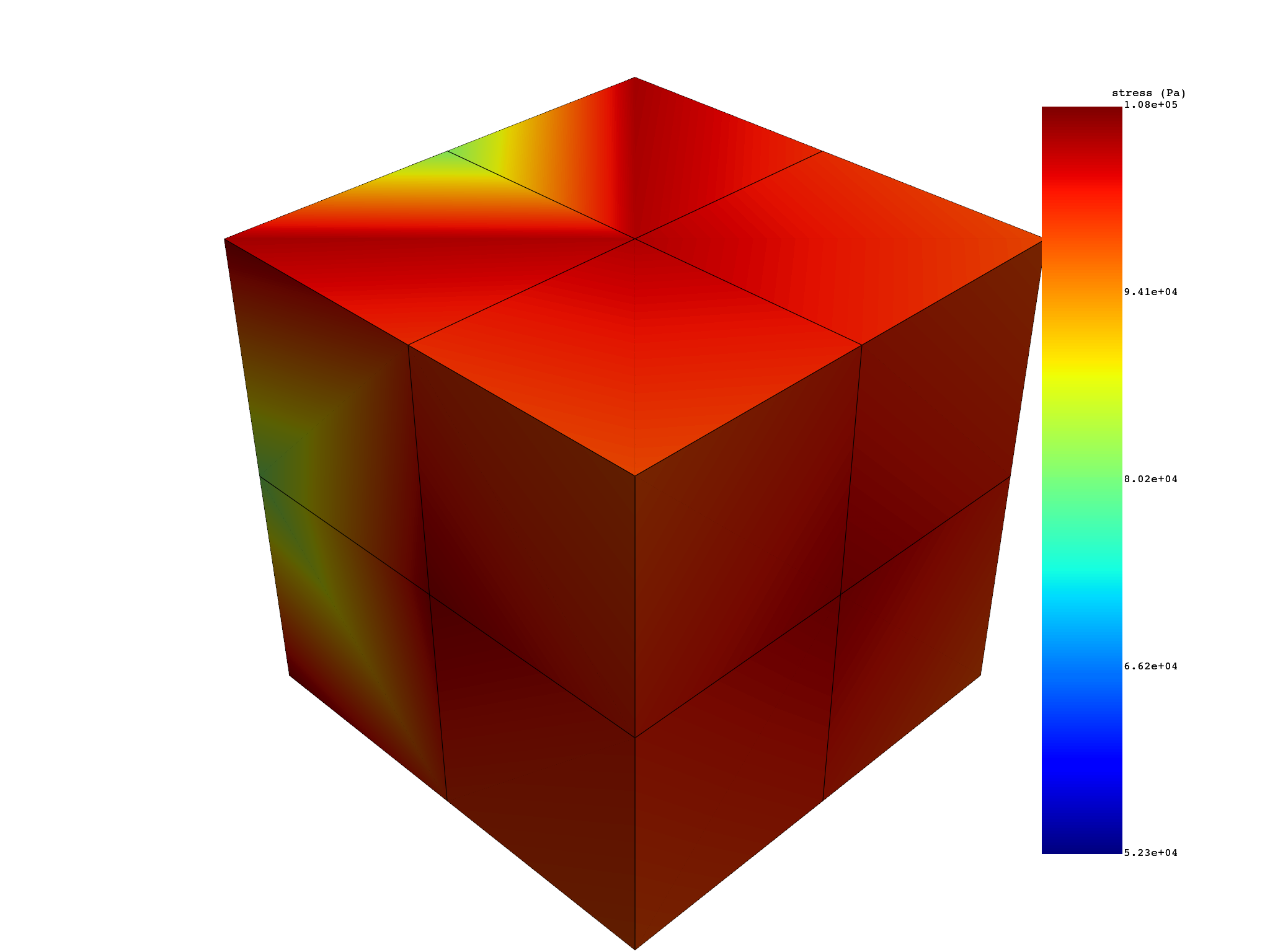Note
Go to the end to download the full example code.
Postprocess a static mechanical simulation#
This example shows how to postprocess a static mechanical simulation to extract results like displacement and stress. It shows how to selecting subparts of the results by scoping on specific nodes or elements.
Perform required imports#
Perform required imports. This example uses a supplied file that you can
get by importing the DPF examples package.
from ansys.dpf import post
from ansys.dpf.post import examples
Get Simulation object#
Get the Simulation object that allows access to the result. The Simulation
object must be instantiated with the path for the result file. For example,
"C:/Users/user/my_result.rst" on Windows or "/home/user/my_result.rst"
on Linux.
example_path = examples.find_static_rst()
# to automatically detect the simulation type, use:
simulation = post.load_simulation(example_path)
# to enable auto-completion, use the equivalent:
simulation = post.StaticMechanicalSimulation(example_path)
# print the simulation to get an overview of what's available
print(simulation)
displacement = simulation.displacement()
print(displacement)
Static Mechanical Simulation.
Data Sources
------------------------------
/opt/hostedtoolcache/Python/3.10.19/x64/lib/python3.10/site-packages/ansys/dpf/core/examples/result_files/static.rst
DPF Model
------------------------------
Static analysis
Unit system: MKS: m, kg, N, s, V, A, degC
Physics Type: Mechanical
Available results:
- node_orientations: Nodal Node Euler Angles
- displacement: Nodal Displacement
- reaction_force: Nodal Force
- stress: ElementalNodal Stress
- elemental_volume: Elemental Volume
- stiffness_matrix_energy: Elemental Energy-stiffness matrix
- artificial_hourglass_energy: Elemental Hourglass Energy
- kinetic_energy: Elemental Kinetic Energy
- co_energy: Elemental co-energy
- incremental_energy: Elemental incremental energy
- thermal_dissipation_energy: Elemental thermal dissipation energy
- elastic_strain: ElementalNodal Strain
- elastic_strain_eqv: ElementalNodal Strain eqv
- element_orientations: ElementalNodal Element Euler Angles
- structural_temperature: ElementalNodal Structural temperature
------------------------------
DPF Meshed Region:
81 nodes
8 elements
Unit: m
With solid (3D) elements
------------------------------
DPF Time/Freq Support:
Number of sets: 1
Cumulative Time (s) LoadStep Substep
1 1.000000 1 1
results U (m)
set_ids 1
node_ids components
1 X -3.3190e-22
Y -6.9357e-09
Z -3.2862e-22
26 X 2.2303e-09
Y -7.1421e-09
Z -2.9208e-22
... ... ...
Select subparts of displacement#
# To get X displacements
x_displacement = displacement.select(components="X")
print(x_displacement)
# equivalent to
x_displacement = simulation.displacement(components=["X"])
print(x_displacement)
# plot
x_displacement.plot()
# extract displacement on specific nodes
nodes_displacement = displacement.select(node_ids=[1, 10, 100])
nodes_displacement.plot()
# equivalent to:
nodes_displacement = simulation.displacement(node_ids=[1, 10, 100])
print(nodes_displacement)
results U (m)
set_ids 1
node_ids components
1 X -3.3190e-22
26 2.2303e-09
14 0.0000e+00
12 0.0000e+00
2 -3.0117e-22
27 2.0908e-09
... ... ...
results U_X (m)
set_ids 1
node_ids
1 -3.3190e-22
26 2.2303e-09
14 0.0000e+00
12 0.0000e+00
2 -3.0117e-22
27 2.0908e-09
... ...
results U (m)
set_ids 1
node_ids components
1 X -3.3190e-22
Y -6.9357e-09
Z -3.2862e-22
10 X 0.0000e+00
Y 0.0000e+00
Z 0.0000e+00
Compute total displacement (norm)#
Compute the norm of the displacement on a selection of nodes.
nodes_displacement = simulation.displacement(
node_ids=simulation.mesh.node_ids[10:], norm=True
)
print(nodes_displacement)
nodes_displacement.plot()
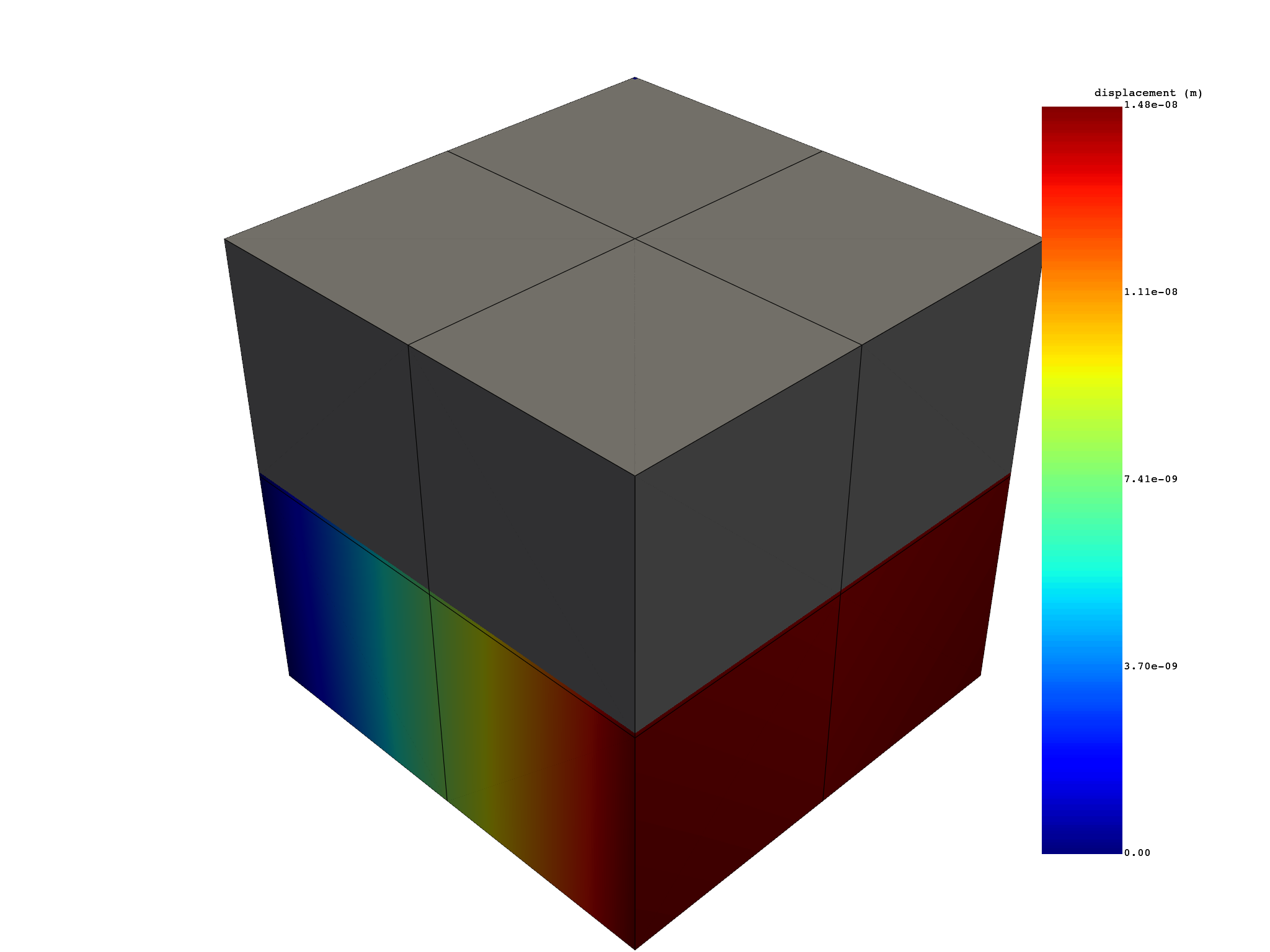
results U_N (m)
set_ids 1
node_ids
11 0.0000e+00
12 0.0000e+00
13 0.0000e+00
14 0.0000e+00
15 0.0000e+00
16 0.0000e+00
... ...
(None, <pyvista.plotting.plotter.Plotter object at 0x7f3f5af8a110>)
Extract tensor stresses#
Extract raw elemental nodal stresses from the result file. Then, apply averaging and compute equivalent stresses.
elem_nodal_stress = simulation.stress()
print(elem_nodal_stress)
# Compute nodal stresses from the result file
nodal_stress = simulation.stress_nodal()
print(nodal_stress)
# Compute elemental stresses from the result file
elemental_stress = simulation.stress_elemental()
print(elemental_stress)
# Extract elemental stresses on specific elements
elemental_stress = elemental_stress.select(element_ids=[5, 6, 7])
elemental_stress.plot()
# Compute nodal eqv stresses from the result file
eqv_stress = simulation.stress_eqv_von_mises_nodal()
print(eqv_stress)
eqv_stress.plot()
results S (Pa) ...
set_ids 1 ...
node 0 1 2 3 4 5 ...
element_ids components ...
5 XX -3.7836e+03 1.1793e+04 -3.2947e+04 -2.2019e+04 7.3721e+03 1.8301e+04 ...
YY -1.2110e+05 -9.9179e+04 -1.0033e+05 -7.4344e+04 -9.9179e+04 -8.0542e+04 ...
ZZ -3.7836e+03 7.3721e+03 -3.2461e+04 -2.2019e+04 1.1793e+04 1.8301e+04 ...
XY 5.3318e+02 -9.7301e+03 2.6037e+04 -1.2541e+03 5.5354e+02 -1.1500e+04 ...
YZ -5.3318e+02 -5.5354e+02 1.1343e+03 1.2541e+03 9.7301e+03 1.1500e+04 ...
XZ -1.4540e+02 5.9879e+02 -2.4309e+02 -2.1037e-10 5.9879e+02 2.5527e+02 ...
... ... ... ... ... ... ... ... ...
results S (Pa)
set_ids 1
node_ids components
1 XX -4.8113e+03
YY -1.1280e+05
ZZ -4.8113e+03
XY 0.0000e+00
YZ 0.0000e+00
XZ 0.0000e+00
... ... ...
results S (Pa)
set_ids 1
element_ids components
5 XX -1.2071e+04
YY -1.0000e+05
ZZ -1.2071e+04
XY 3.8006e+03
YZ -3.8006e+03
XZ 4.1885e+01
... ... ...
results S_VM (Pa)
set_ids 1
node_ids
1 1.0799e+05
26 1.0460e+05
14 8.1283e+04
12 5.2324e+04
2 1.0460e+05
27 1.0006e+05
... ...
(None, <pyvista.plotting.plotter.Plotter object at 0x7f3f48239ed0>)
Total running time of the script: (0 minutes 11.479 seconds)


